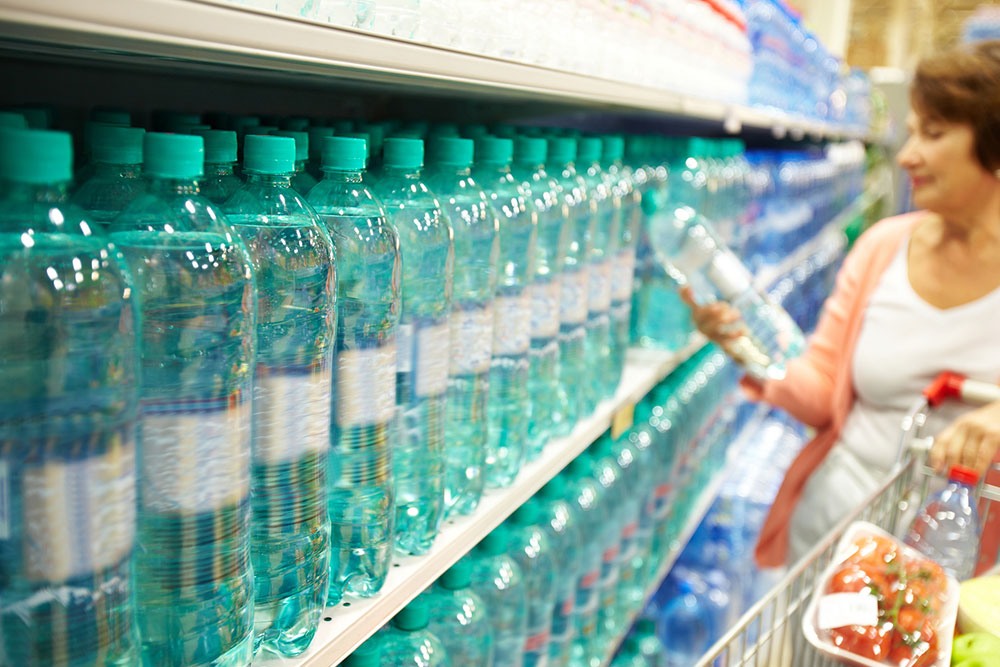9 tips to choose the right water bottle

Nothing is more beneficial for the body than having plenty of water throughout the day. From glowing skin to a healthy digestive system and better absorption of nutrients, water does a world of good. And that’s why filling up one’s water bottle first thing in the morning is a great idea to stay hydrated throughout the day. There’s a variety of water bottles available today; here are some tips to pick the right one:
1. Check if it maintains the temperature of the water
While some people are absolutely fine with having water at room temperature, others require ice-cold, warm, or hot water. If one likes water to remain at a specific temperature, one should look for vacuum-insulated bottles. Here, the water in the bottle is protected from the air temperature outside, which retains its temperature. Stainless steel vacuum-insulated water bottles are the most common on the market. Copper-lined bottles and bottles with double-walled construction also provide sufficient insulation.
2. Consider the bottle’s size and volume
The ideal size of one’s water bottle depends on how much daily water one needs and the duration one must wait before refilling it. For example, those commuting to and from work daily may be unable to refill their water bottles during this time. So, they may require bottles of larger capacities so that there is enough water to reach their destinations. In contrast, those working from home or at an office nearby may not need large-sized bottles because they can easily have their bottles refilled. These factors should be considered when buying a water bottle.
3. Ensure that the lid is firm and tight
A lid may not seem like a big deal, but there’s nothing messier than a leaky water bottle. So, it is essential to buy water bottles whose lids are firm and tight but open up quickly when needed. Also, those who commute daily and need a convenient strategy to open their water bottles on the go may benefit from flip lids, which pop open at the press of a button, instead of screw-top lids, which must be rotated to be opened. Also, the risk with screw-top lids is that if one misses closing them properly, there is a chance of water leakage.
4. Look for bottles that are light and portable
This one is significant for those who travel or commute regularly. In such cases, one should think about how they would be carrying their water bottle—in their hands, packed in a bag, in the storage area of their scooter, etc. Accordingly, one can buy a water bottle that easily fits in these spaces and is made of a lightweight material. For example, BPA-free plastic bottles with filters or aluminum may be great options for those who need portable water bottles for their daily commutes. In contrast, those who do not commute or travel frequently may invest in glass or stainless steel bottles.
5. Set a budget limit
With the number of fancy bottles available on the market, it is easy to splurge on water bottles. To avoid such situations, one should research the types of water bottles available and their approximate price ranges and set a budget. During this research, one should only check out good-quality water bottles so that there is no compromise on quality for price. The best bet is a water bottle that meets one’s needs while being reasonably priced and within one’s budget.
6. Do not overlook esthetic appeal
A lightweight, utility-based water bottle is an excellent addition to one’s belongings, but aesthetic appeal also matters. For example, some people may like to match their outfits, such as gym gear or accessories, with their water bottles. Some others may like bottles with quirky and unique designs or quotes printed on them. Customized water bottles are also available today, especially on e-commerce sites. So, it’s a good idea to think about what designs and patterns one may prefer and pick a water bottle accordingly.
7. Consider water bottles that are recyclable
With the ongoing tussle for resources, being environmentally conscious is a must, even when buying water bottles. Today, various sustainable, recyclable bottles are made of eco-friendly materials. For example, paper water bottles are renewable, compostable, trendy, and aesthetically pleasing. Similarly, several BPA-free plastic bottles, such as PET water bottles, can be easily recycled. Recyclable water bottles reduce waste and can help one take a step toward conserving the environment.
8. Invest in water bottles that motivate one to drink water
These days, water bottles that measure how much water one has had throughout the day are available. With these water bottles, one can constantly monitor one’s water intake and increase it if needed. Some water bottles even have motivational quotes alongside every marking. Such motivational quotes are great for those who have just started cultivating the habit of drinking water regularly.
9. Ensure that the bottle is not made of any harmful material
Sometimes, water bottles may be overtly made of a particular safe element, such as stainless steel, but a harmful substance like lead may have been used. It is important to ensure the bottle does not contain harmful elements.







